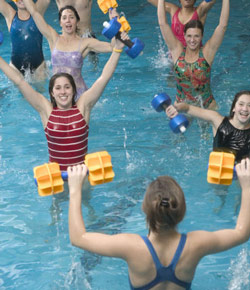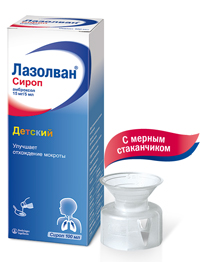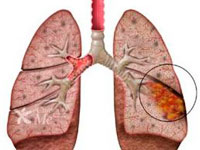In healthy people, adaptive capabilities are well developed, and in case of illness they decrease to one way or another. Therefore, the patients with asthma and chronic diseases of the lungs are very important to tempering, which should be carried out according to the special rules.
Content
In patients with chronic lung diseases, which include bronchial asthma and chronic obstructive bronchitis (it is a chronic obstructive pulmonary disease), the portability of physical exertion and cold decreases, there is a tendency to frequent colds. Almost anyone knows what to cope with infections and colds helps hardening. But how to make hardening and make it part of everyday life, know a few.
So, hardening — This is a way to influence the adaptive abilities of the body, to make it resistant to cold and limit the risk of developing infectious diseases. There are various hardening methods. Most often use hardening cold water.
The use of cold water procedures is mentioned in the works of ancient doctors - Hippocratic, Avicenna; Hardening was an important part of the physical development of Sparta residents. Cold douses were practiced in the lyceums and guesthouses of pre-revolutionary Russia. It is known that an outstanding Russian ballerina Anna Pavlova grew by Hilh, an extremely painful child, but the passion for the ballet won — overcoming themselves and their fear, the young ballerina began to pour cold water in the mornings and evenings, strengthened physically and became the pride of Russian ballet. No less famous woman, ingenious mathematician Sophia Kovalevskaya talk about their relations with cold water.
 In recent years, various hardening programs for patients with chronic lung diseases have been developed and continued. These methods contribute to the development of protective-adaptive reactions of the body. Due to the hardening, the process of adaptation to cooling occurs, and changes are occurring, which cause no narrowing of vessels when exposed to cold, but, on the contrary, their expansion. With systematic use of low-temperature modes, the stability of the body sections to cold is increased. Increased skin temperature before cooling is an adaptive reaction having a conditionally reflex character.
In recent years, various hardening programs for patients with chronic lung diseases have been developed and continued. These methods contribute to the development of protective-adaptive reactions of the body. Due to the hardening, the process of adaptation to cooling occurs, and changes are occurring, which cause no narrowing of vessels when exposed to cold, but, on the contrary, their expansion. With systematic use of low-temperature modes, the stability of the body sections to cold is increased. Increased skin temperature before cooling is an adaptive reaction having a conditionally reflex character.
Hardening is a training system of physiological adaptation mechanisms by systematic, periodically repeated cold irritation of the skin with increasing intensity. Water with a temperature of about 33°C is felt by a man as warm, 23°WITH — How cool, 13°WITH — How cold. Water with temperature below 23°C has a stimulating effect on which the body responds, changing the processes of thermoregulation and including physiological adaptation mechanisms.
Under the influence of cooling, heat generation processes in the body are accelerated (under experimental conditions — up to 4 times compared to the initial level). With the intensive exposure of the cold, the tone of the sympathetic nervous system increases (adrenaline is released in blood), which is the first protective reaction, the second protective reaction of the body is in reinforced heat generation as a result of stimulation of adrenal and thyroid function.
In the previously existing harvesting programs, a slow decrease in the water temperature was assumed, and the timing to achieve temperature adaptation were so stretched that they could not have hardened patients with chronic bronchitis and bronchial asthma - during this time the aggravation of the disease was occurring. Therefore, in our clinic we used a technique that provides for rapid hardening with cold water. Patients were carefully examined to eliminate serious diseases of the cardiovascular system (especially ischemic heart disease with rhythm attacks or rhythm disorders), kidney (pyelonephritis, glomerulonephritis), nervous system.
Hardening was a mandatory part of the physical rehabilitation program (along with respiratory gymnastics and physical education), but the transition to the adoption of cold water procedures was arbitrary. In some patients, the transition to low-temperature modes was carried out gradually - through a comfortable and contrasting souls, others began to douse with cold water without prior preparation, and several people began to immediately take cold baths with a duration of 40 seconds to 1.5 minutes. For those patients who could not immediately start water procedures, they were at first replaced by the rubbing of the body with a dry terry towel. Harding procedures were performed daily, 1—2 times a day.
If you decide to start hardening with cold water, first of all, consult your doctor about the possibility of such a type of hardening for you. Then stick to the following basic rules.
one. Never spend cold water procedures if you sweat or you, on the contrary, very cold. First, take the usual shower, and then pour the bucket of cold water. The use of a cold shower is not recommended, since this procedure will cause supercooling, and the rapid dumping will not cool the rapid stream, but rather will warm up.
2. After water procedures, you are not cold or in draft.
3. Do not start hardening during a transferred infection or when aggravating any diseases.
4. It should be remembered that hardening — Only one of the components of the rehabilitation. To achieve maximum effect it is necessary to combine hardening with respiratory gymnastics and exercise.









